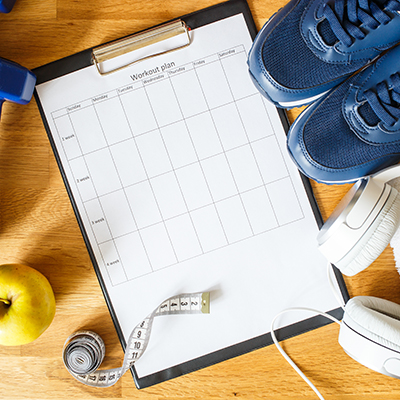Checklist for Returning To Running Postpartum
Posted June 13, 2023

Step 1: Activity
Make sure that you have been cleared to return to running by your medical provider. It’s generally advisable to wait 12 weeks after delivery and be able to pass the following tests to start gradually returning to running. You need to have the ability to complete all the tasks below without:
- Leaking
- Pelvic “heaviness,” “dragging” or a “falling out” sensation
- Diastasis recti (noticeable gap and/or bulging along the midline of your abdomen)
- Bleeding
- Pelvic girdle/low back pain
If you are experiencing any of these symptoms, ask your medical provider about a referral to pelvic health physical therapy.
|
Activity |
Duration/Repetitions |
|
|
|
Walking |
30 minutes |
|
|
|
Single leg balance |
10 seconds each side |
|
|
|
Single leg squat |
Repetitions each side |
|
|
|
Jog on the spot |
1 minute |
|
|
|
Forward bounds |
10 repetitions |
|
|
|
Single leg hop in place |
10 repetitions each leg |
|
|
|
Single leg “running man” – raise opposite arm and hip flexion, jump, and switch |
10 repetitions each side |
|
Step 2: Strength Testing
By identifying and working on areas of decreased strength, you can help prevent injuries and pain.
|
Abdominals |
Runner’s endurance hold (knee up on wall) |
1 minute each side |
|
Side plank |
30 seconds each side |
|
|
Pelvic Floor |
Strengthening or down-training as indicated (your pelvic health PT can help you figure out which one!) |
|
|
Hip/Pelvis Control |
Single leg RDLs |
10 repetitions each side |
|
Gluteus medius (i.e. clamshells) |
15 repetitions each side |
|
|
Gluteus minimus (i.e. sidelying or standing hip abduction) |
15 repetitions each side |
|
|
Single leg bridge on foam roller |
10 repetitions each side |
|
|
Adductor plank |
10 repetitions each side |
|
|
Ankle |
Posterior tibialis (i.e. calf raises, resisted ankle inversion) |
10 repetitions each side |
|
Foot intrinsics (i.e. big toe dorsiflexion, doming, towel scrunches, marble pick-ups) |
10 each activity |
|
|
Balance |
Step downs |
10 repetitions |
|
Single leg balance |
30 seconds each leg |
|
|
Single heel raises |
10 repetitions each side |
|
|
Impact |
Plank hops |
30 seconds |
|
Hop in place |
30 seconds |
|
|
Single leg hops |
30 seconds each leg |
Note: Running with a stroller changes gait mechanics! If you’re a stroller runner, it is important to incorporate flexibility exercises for your spine, pelvis, buttocks and hips. Always check with your pediatrician prior to running with your baby in a stroller.
Step 3: Additional Considerations
Think about:
- WHY you are running. Be kind to yourself.
- Overall fitness, breathing, anxiety/depression status, abdominal wall recovery (diastasis recti and/or C-section delivery), scars (C-section, episiotomy, 2nd/3rd/4th degree tears), sleep and nutrition/hydration. Let yourself heal and don’t tax yourself.
- Breast-feeding status. Breast feeding can alter hormone status which can affect prolapse and pelvic stability. You may also have increased hydration and nutritional needs.
- Supportive clothing (for belly, breasts, pelvis/hips/low back, pelvic floor muscles), such as belts, bands, appropriate sports bras and compression underwear.
Your Summa Health pelvic health physical therapist (PT) can help with all of the above and establish a safe and tailored return to running program for you. PTs can also point you to other providers and resources as needed. To learn more, visit summahealth.org/therapy.
Adapted from: Goom T, Donnelly G, Brockwell E. “Returning to running postnatal – guideline for medical, health and fitness professionals managing this population.” March 2019, and Expecting and Empowered website. February 2019. Postpartum Running: Safety Tips and Strengthening Freebie — Expecting and Empowered
Vitality eNews Sign Up
Receive the Summa Health eNewsletter for the latest health tips, advice and updates.
